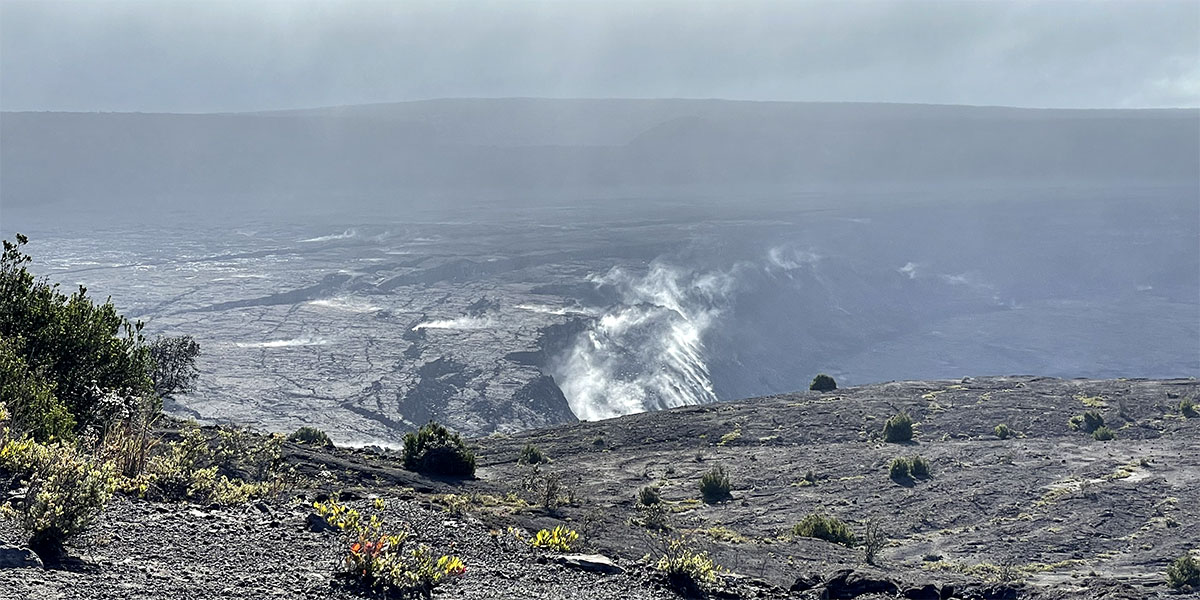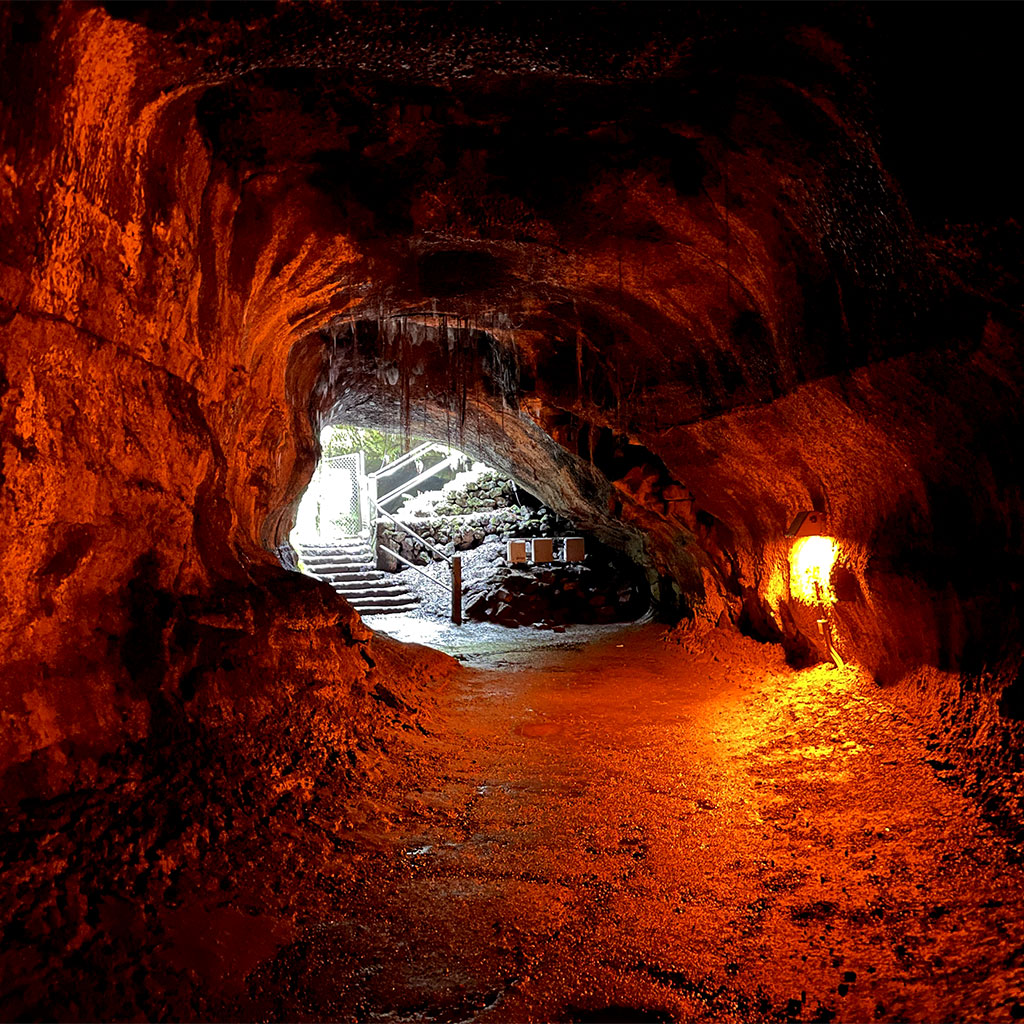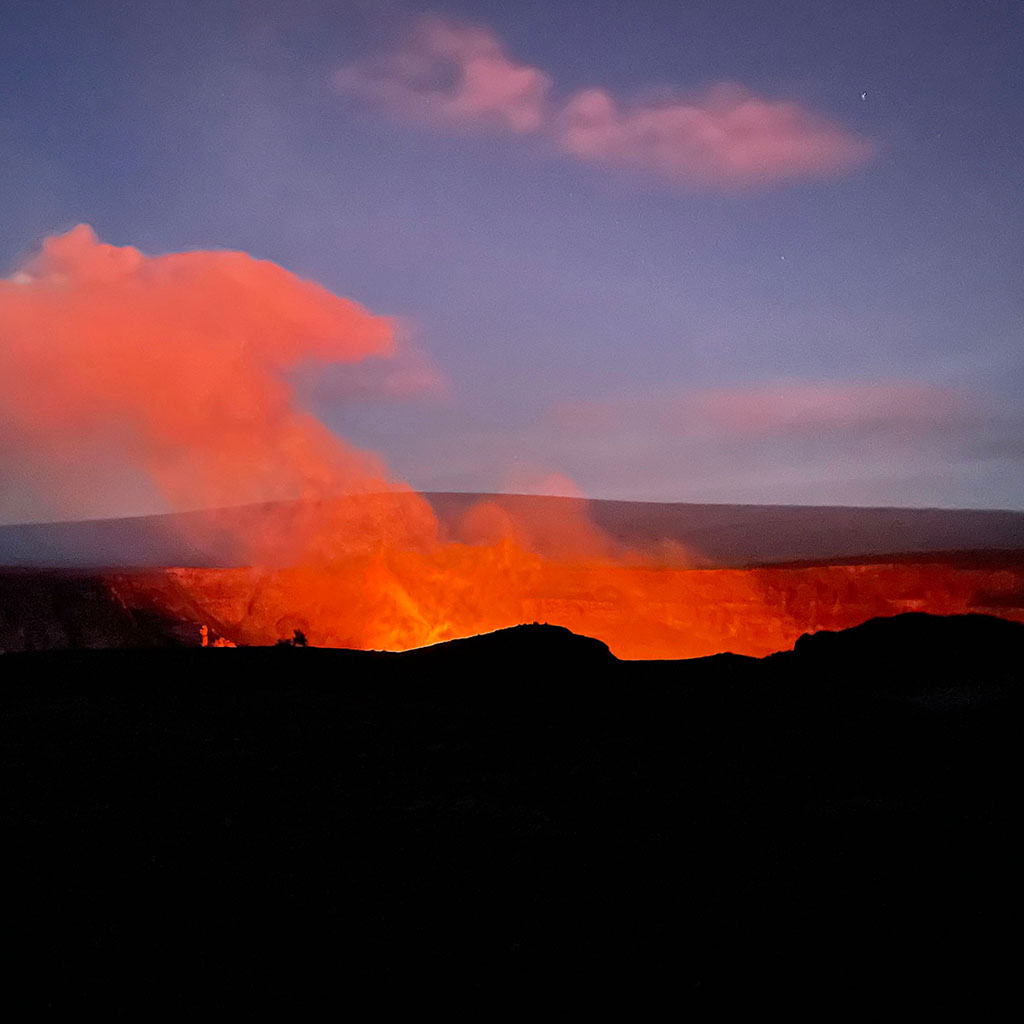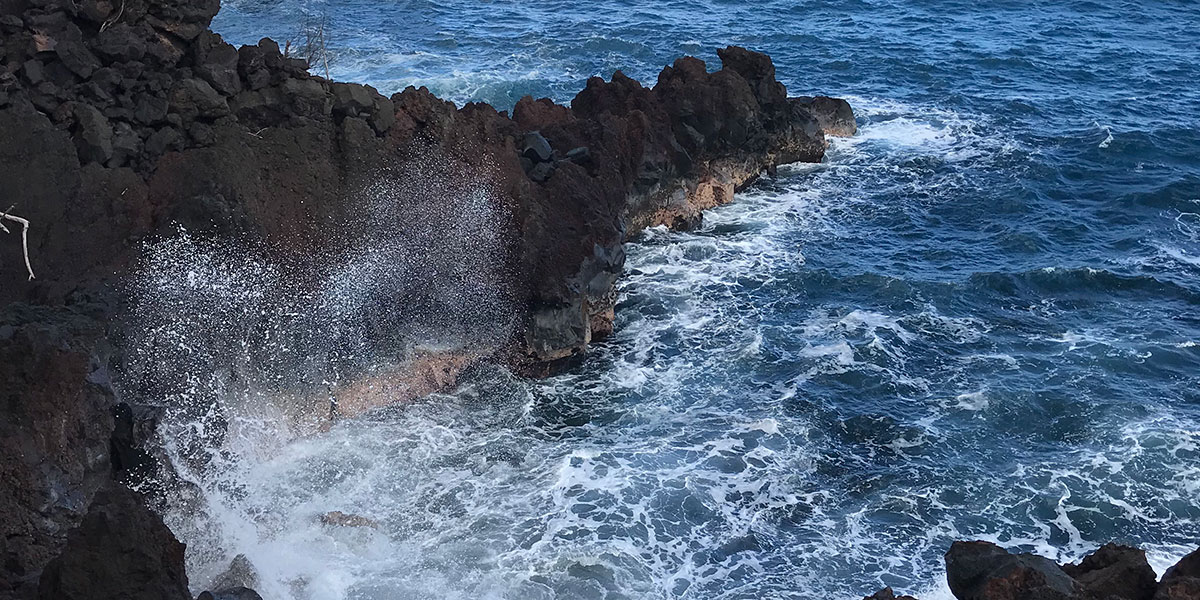Kilauea, Mauna Loa, and the Land of Lava
Home to the world’s largest and most active volcanoes – Mauna Loa and Kilauea, respectively – Big Island lava viewing is world-class. From the time that you land on Hawaiian soil, you’ll be stepping foot on hardened lava, built up over time as one eruption after another created the Big Island’s vast and varied landscape. Some of the newest lava flows, or fields, are within a few miles of our Big Island bed and breakfast, providing a once-in-a-lifetime opportunity to see the volcanic terrain up close during your stay.

big island Lava: how they Form and What You’ll See
The source of Big Island lava begins thousands of feet below the ocean, where a hot spot has been churning blazing hot magma for millions of years, feeding the island chain’s volcanoes and forming the land masses of the Hawaiian Emperor Seamount Chain. Once it reaches the surface, emerging in the calderas of nearby Kilauea or Mauna Loa, it is a staggering 2,140 degrees Fahrenheit! Kilauea has been under near-constant eruption for decades (and had activity as recently as March 7th, 2023), and significant events like the six-month eruption in 2018 completely reshaped the topography of the Puna district adjacent to Volcano Village.
You’ll see two types of lava fields when exploring rift zones around Mauna Loa and Kilauea. Pahoehoe lava has a smooth crust due to its low viscosity, flowing like a slow-moving river and forming tubes under its sheet-like surface. Make sure to visit the Nahuku Thurston Lava Tube to step inside and hike through one such lava tube. On the other hand, ‘a’a lava hardens into a rough and sharply contoured surface. Sometimes you’ll see a layer of pahoehoe lava on top of ‘a’a, a visual timeline of different eruptions – each unique in its volcanic makeup – and their breathtaking aftermath.


Where to See Lava Fields, Ancient and New
It’s hard to imagine a more exciting sight than observing erupting lava (check the current status of Kilauea and Mauna Loa before and during your visit), but exploring Big Island lava fields from recent eruptions is undoubtedly a close second. Start by driving on Chain of Craters Road, an 18-mile route from the summit of Kilauea down the coastline. Along the way, you’ll pass by Pauahi Crater and Makaopuhi Crater and areas covered by lava during massive eruptions throughout the 1980s and 90s. Stop midway for a hike on the Naulu Trail, a 3.3-mile trek across an ‘a’a lava field, a stark but beautiful landscape formed by countless Kilauea eruptions. In 2018, lava drained from Kilauea’s summit dramatically and emerged out of Pu’u’o’o, a volcanic cone visible from the Naulu Trail. For the best views, add a couple of miles and hike up to the crater overlook, where you can see fields of lava for miles stretching to the ocean.
For another lava field-viewing day trip, take the scenic 30-mile drive from Volcano along Highway 11 and east into the Puna district on Highway 130. Stop for a tour of the Pahoa Lava Zone Museum (open daily from 11 am – 4:30 pm) in the laidback town of Pahoa. Their all-volunteer staff will guide you through the history of the “lava zones” of the Big Island, including several must-see lava-related places of interest nearby heading out of Pahoa on Highways 130 and 132. You’ll see still-steaming fissures from the 2018 eruption, impressive lava fields from the 1955 eruption, and the one-of-a-kind lava-encrusted trees at Lava Tree State Monument.

Wrap up the adventure with perhaps the most stunning lava field at Isaac Hale Beach Park, where a massive lava flow from 2018 sits directly next to the beach’s iconic stretch of black sand. Relax in the thermal pools, which are still cooking at over 100 degrees due to the recent volcanic activity, and marvel at the 15-20 feet high lava fields right next to the park.
Stay with us and explore the Big Island’s lava landscapes!

